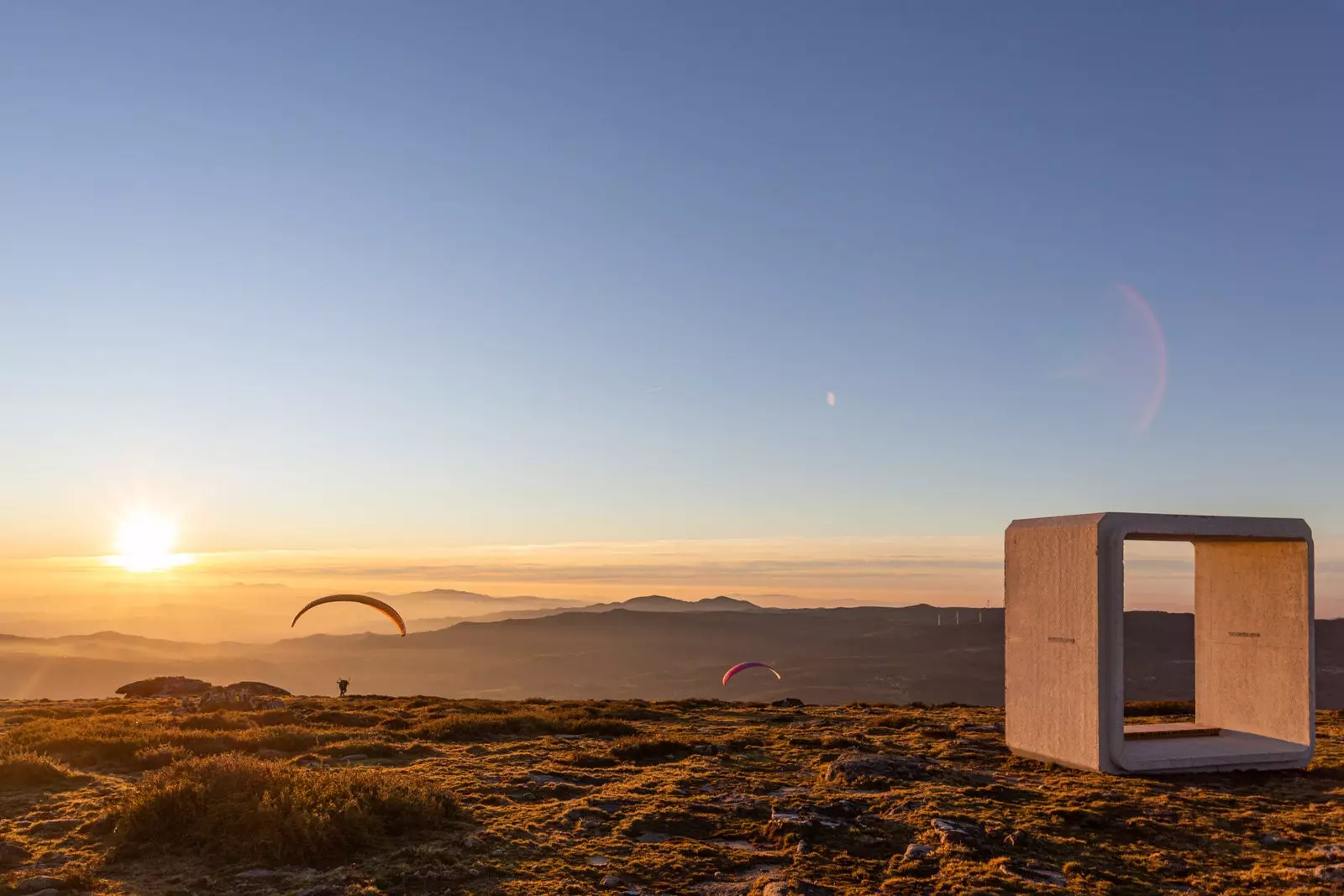
Castelo do Faro de Avión viewpoint, in Covelo (Potevedra).
Imagine a window facing the horizon. Sit back and watch. Everything is light. Our blood is measured by the absorption of light, and the reddish color of the sunset by the refraction of light. Red turns purplish almost very dark blue, and when there seems to be nothing but darkness, pinpoints of light, light again, scattered everywhere until you feel like you're floating. No, it is not a lysergic dream, it is watching the sunset at an astronomical observatory in the Rías Baixas.
** BETWEEN BENCHES AND VIEWPOINTS **
Mortal killers than slaves. (Rather dead than slaves). Legend has it that this was what the last Celtic Gauls said before taking their own lives. It was either that or surrender to the Roman Empire. They say it was on a mountain, but the legend does not place it well. It could be the Médulas, or the Santa Trega mountain, or the San Nomedio mountain, in As Neves, from where we are talking to you. What In the Avión viewpoint, there is an astronomical viewpoint and a window. That window is nothing more than a concrete structure that simulates a painting to sit and watch. It is oriented to the sunset, at 694 meters high, and you can see the Val do Termes and the Val do Xuliana. To Franqueira, A Paradanta, Chan do Rei, San Fins or Cerdeira. And on clear days, the view reaches the Cíes Islands.
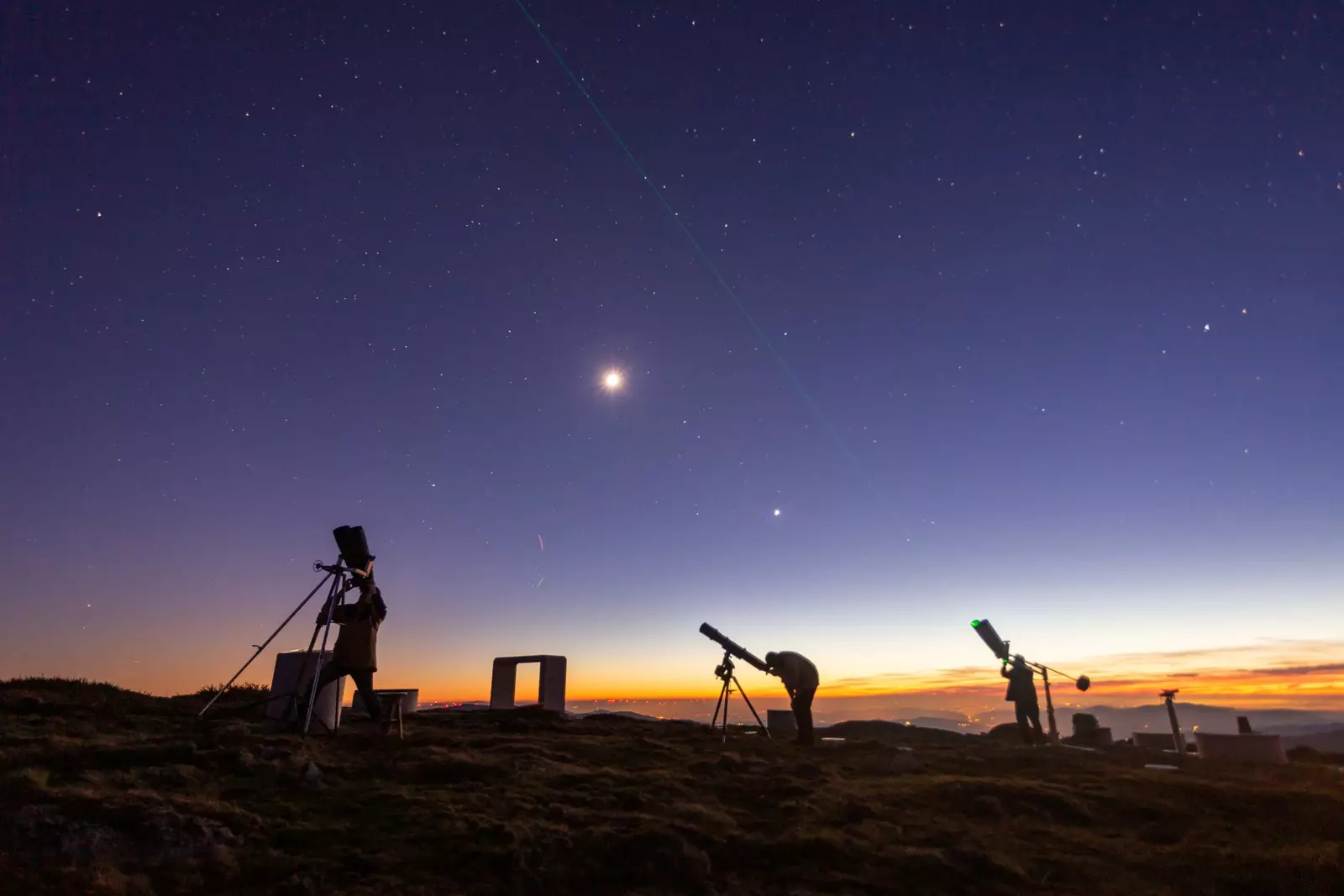
In the Avión viewpoint there is an astronomical viewpoint and a window.
Or you can see from the pink bank of Caritaina throughout the Vigo estuary. It is in Ponte Sampaio and is accessed by following a path, a path. You will see the Roman bridge, which has been used to move your steps for a thousand years.
There were times when you paid to pass, until in the twelfth century an archbishop said enough is enough. Others said enough to avoid future evils, as in the war with the French, who ended up throwing them out with cannons made of wood. It is the path that linked Brácara Augusta and Lucus Augusti. The Roman Way XIX. It is also the Portuguese Way. Your steps will be the same as so many others have passed through here. Some sang songs. “Vexo Cangas, Vexo Vigo,/ also Vexo Redondela,/ Vexo to Ponte de Sampaio,/ Camino da Nosa Terra”.
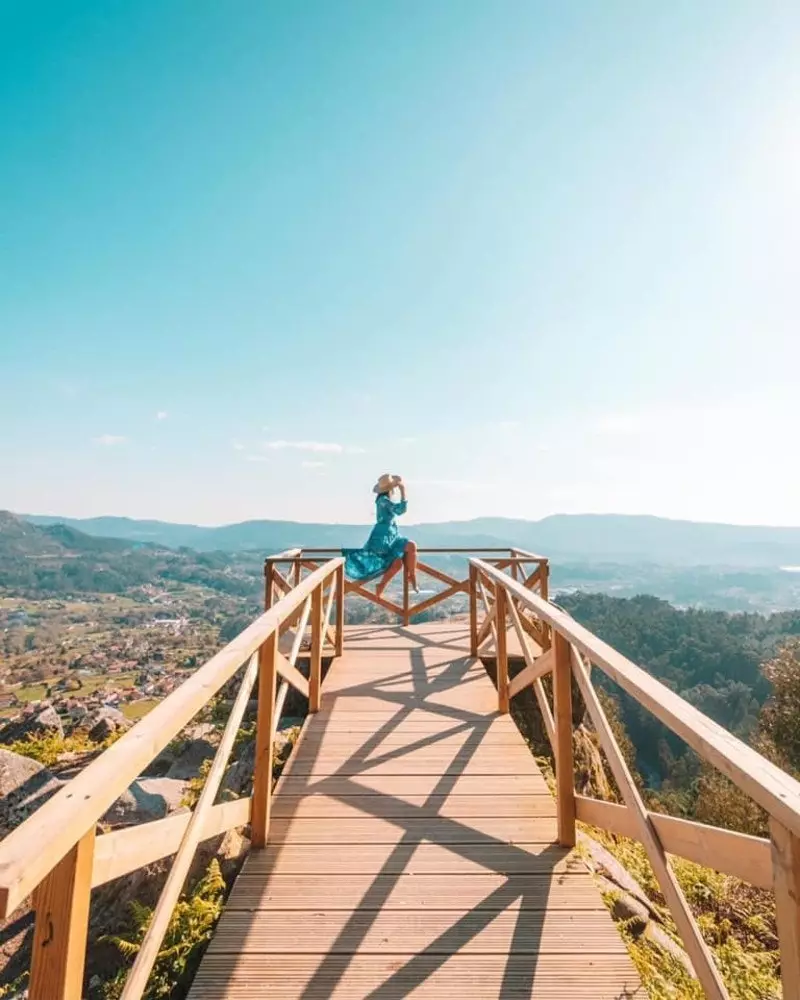
Alto del Piricoto do Vilar, a viewpoint in Nigrán to see the entire horizon.
WAY INSIDE
Sometimes stopping is not enough. The path is made by walking, but the steps are exhausting. These lands have inner fire. It is not figurative. Throughout the south of Galicia thermal waters sprout. Sulphurous, silicated, bicarbonated. In Caldas de Reis you will have two good examples: the Acuña and Dávila spas.
In the Davila spa there is a bamboo garden black that the owners of the establishment brought at the beginning of the last century. Came from the Philippines. Those who came from so far away were called Indians. The water flows and feeds this cane field that only customers can cross. Walk, walk again, but now do it slowly, between the shadows and the breeze, between black reeds brought from so far away.
MANY BEACHES, BUT ALSO GREEN PATHS
Near the smooth and flat granite stone that covers the avenues of Vigo or Pontevedra there are also paths of green and earth. In the Rías Baixas, the cities face the sea and the mountains.
Pontevedra is surrounded by more than 500 hectares of forest parks. There are three: O Pontillón de Castro, A Fracha and A Tomba. The latter can be accessed on foot from the city center. And in the A Fracha park, **a viewpoint in Couto das Forcadas to see the entire Pontevedra estuary. **
To Vigo, however, those who know how to look at it say that you have to do it from the other side of the river. From Tiran or Cangas. If your steps follow the coast to the north, you will find Aldán. From Punta Couso to Cape Udra there is a small estuary full of rafts and small coves. Dip your toes in the fine sand and wait. On a clear day the sun will make the shells glow. Wait for the tide to go out. The water is turquoise, and walking on wet sand is well worth it. Castiñeira, Arnelas, Vilariño, Menduiña, Lagoelas, Bon, Mourisca, Tulla. All the beaches you want.
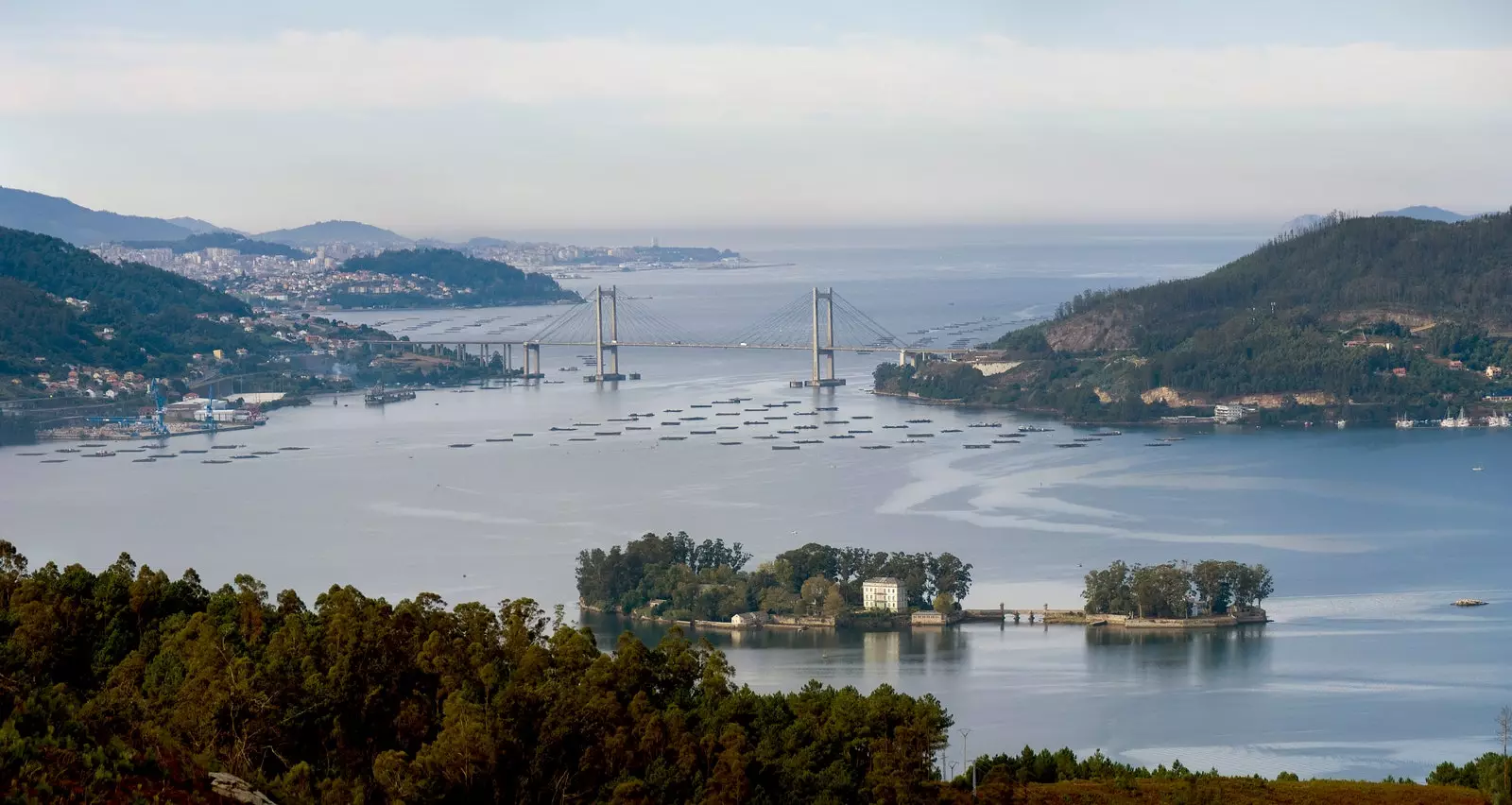
Ensenada de San Simón, at the bottom of the Ría de Vigo.
BETWEEN APPLE TREES AND MARSHES
There are also walks to not hear anything. Continue further north, to the beginning of the Arousa estuary, there where the fresh water begins to be salty and the West Towers watch you, are the marshes of Catoira. A path, a wooden walkway crosses them. The Ulla river enters separating provinces, following its course until it reaches the Portodemouros reservoir.
The path will remain green, but in the region of Tabeirós make a stop to eat. Not everything is going to be looking. Let the other senses enjoy. In They have a salmon party in Estrada in the second half of May, and the cider festival in early June. The cider route will take you to small wineries. Fresh aromas, young maturation. Close your eyes and breathe.
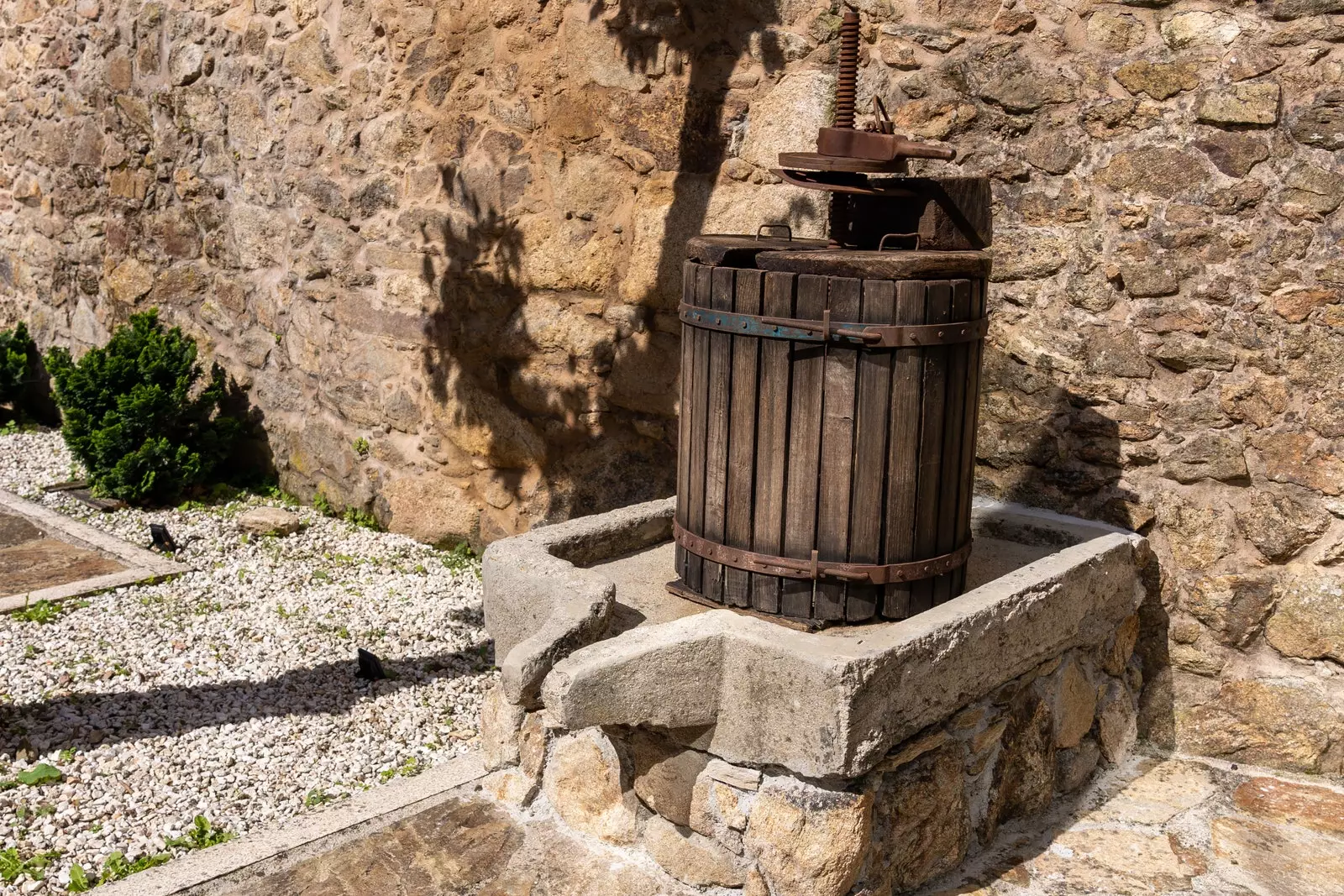
Detail of a wine press, on the Rías Baixas cider route.
Go a little further south, following the course of the river Lérez, until you come to the chapel of San Lourenzo de Serrapio. Go up to the Sierra de O Cando, go to a fervenza, to that of Liñares, to that of Toxa. put your feet very close to the waterfall, where the water roars and splashes with more force. Close your eyes (again), extend your arms and open your hands. And breathe.
If you come from A Guarda along the coast making your way you will reach Baiona and Nigrán. Climb to the top of Piricoto do Vilar, a viewpoint from which you can see the entire horizon. This is the coast of the Rías Baixas, in the Galician province of Pontevedra, where up to six paths that go to Santiago de Compostela intersect. Although you can stay, it doesn't have to be the beginning or the end. Finish your way the place where you will step your last steps, is something that only you decide.
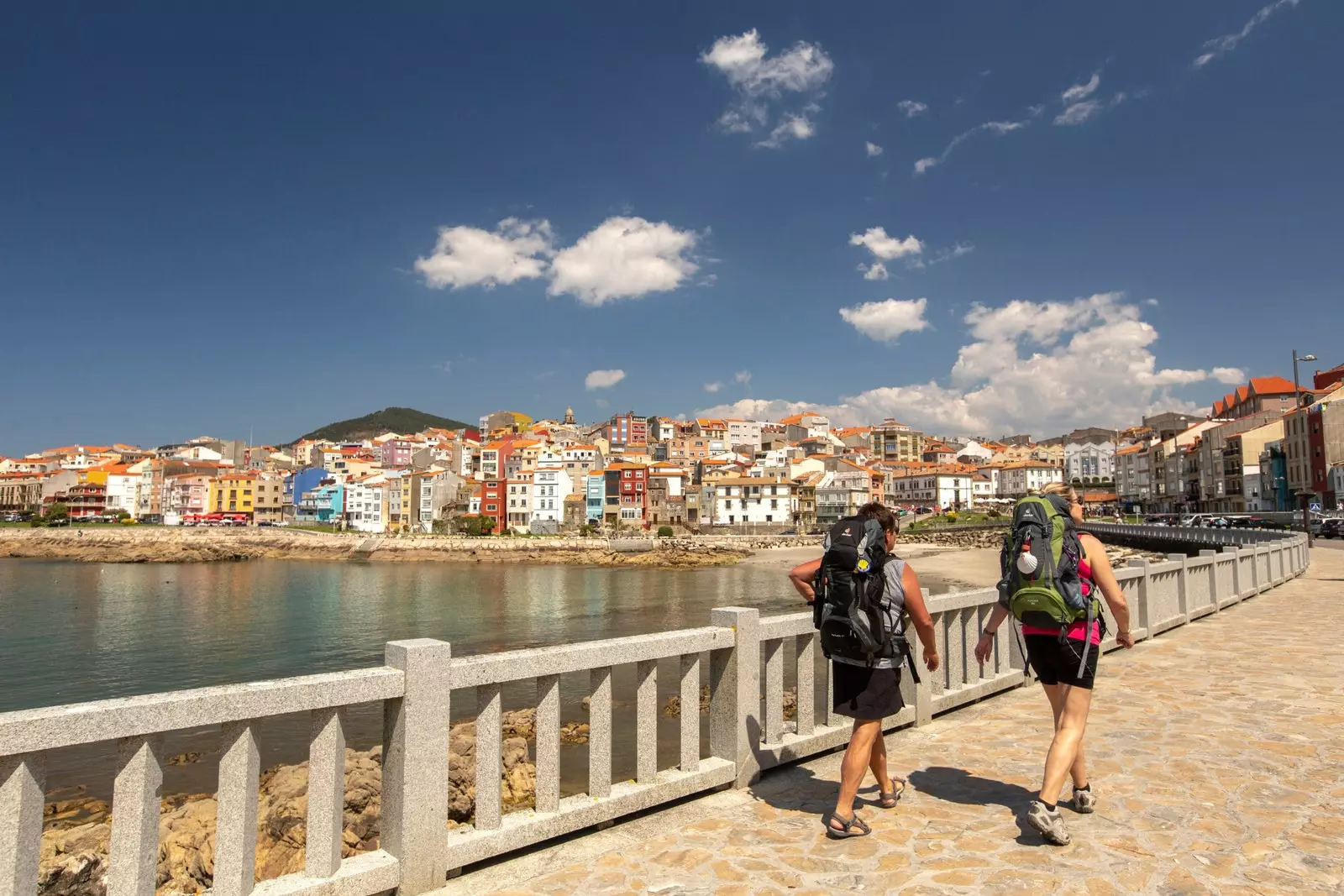
A Guarda, the fishing village through which the Portuguese Way passes.
